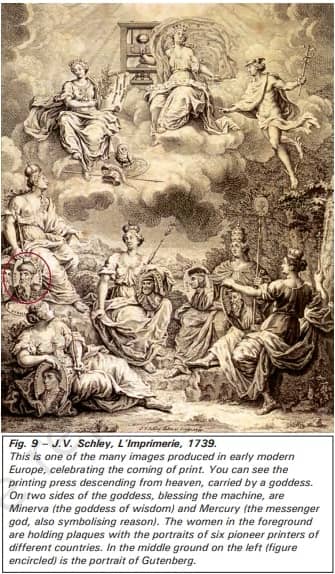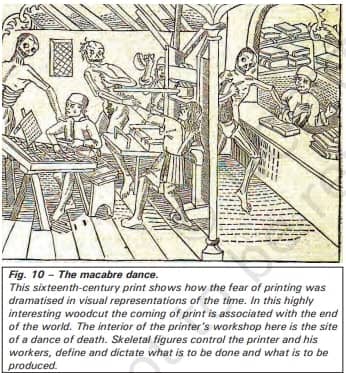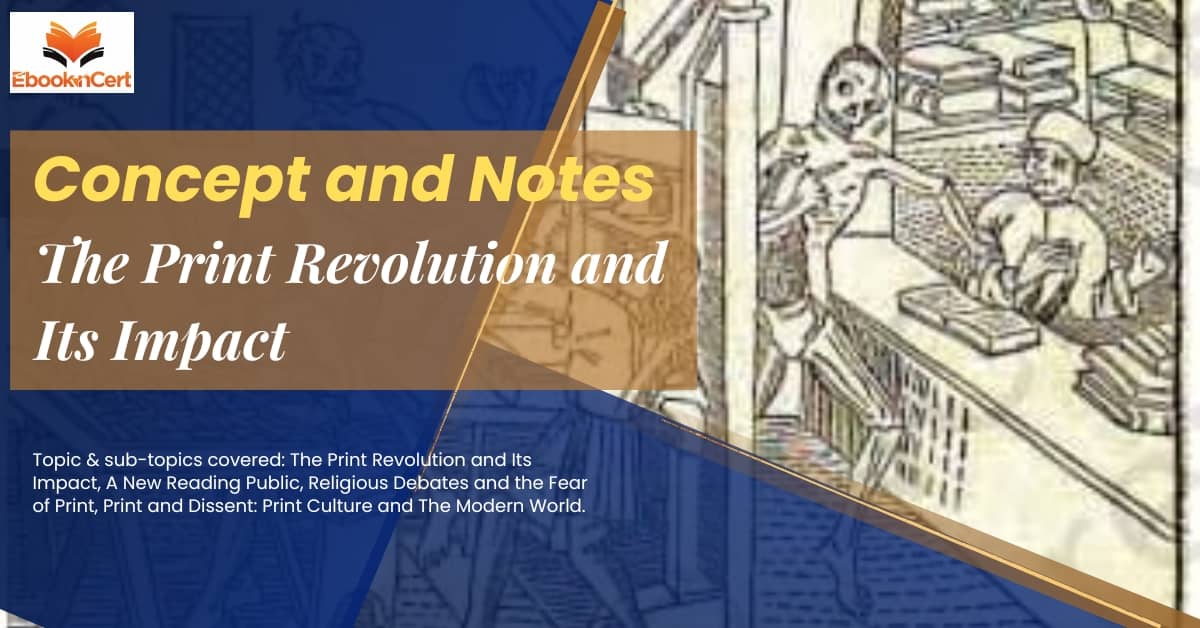NCERT History Class 10 | The Print Revolution and Its Impact – Concept and Notes
Topic & sub-topics covered: The Print Revolution and Its Impact, A New Reading Public, Religious Debates and the Fear of Print, Print and Dissent: Print Culture and The Modern World (All single detail notes are exam-oriented).
We have discussed in-depth and exam-oriented pointers that can be asked in the board exam of class 10th about “The Print Revolution and Its Impact, A New Reading Public, Religious Debates and the Fear of Print, Print and Dissent” which is taken from the NCERT History book for class 10th chapter no. 5 “Print Culture and The Modern World“.
Download NCERT History Chapter 5 Class 10th Notes PDF for “Print Culture and The Modern World”
If you are in class 10th and looking for free NCERT History chapter 5 notes of the chapter Print Culture and The Modern World class 10 that cover concepts, then you can download the free class 10th History chapter 5 notes “Print Culture and The Modern World”. You should download this free PDF for future test or exam preparations.
NCERT Class 10 History Chapter 5 Print Culture And The Modern World Class 10th Notes & Concept
The Print Revolution and Its Impact
A New Reading Public
1. Impact of the Printing Press on the Reading Public:
- Printing press reduced book costs, decreased production time, and facilitated mass production, leading to a flood of books in the market.
- The emergence of a new reading public due to increased accessibility to books.
2. Transition in Reading Culture:
- Previously, reading was limited to elites, while common people engaged in oral culture, listening to sacred texts, ballads, and folk tales.
- The shift from oral to reading culture due to the availability of printed books, allows wider dissemination of knowledge.
3. Challenges of Literacy:
- Low literacy rates in most European countries until the twentieth century posed a challenge for publishers to reach common people with printed books.
4. Strategies to Reach Common People:
- Publishers adapted by producing illustrated books featuring popular ballads and folk tales, appealing to both readers and non-readers.
- Oral transmission of printed material occurred through recitations and singing at village gatherings and town taverns.
5. Blurring of Oral and Reading Cultures:
- Printed material incorporated elements of oral culture, blurring the line between oral and reading cultures.
- Hearing and reading publics intertwined as printed works were orally transmitted and enjoyed by both literate and illiterate individuals.
Religious Debates and the Fear of Print

1. Impact of Printing on the Circulation of Ideas:
- Print enabled wide dissemination of ideas, fostering debate and discussion.
- Individuals could print and circulate their ideas, influencing others’ thoughts and actions.
2. Mixed Reception of Printed Books:
- Not everyone welcomed printed books; fears existed regarding their effects on people’s minds.
- Apprehensions included concerns about rebellious and irreligious thoughts spreading due to uncontrolled printing and reading.
3. Implications in Religion:
- Martin Luther’s Ninety-Five Theses, criticizing Roman Catholic Church practices, was printed and widely circulated in 1517.
- Luther’s writings led to the Protestant Reformation by sparking division within the Church.
- Luther’s New Testament translation sold thousands of copies rapidly, highlighting the power of print in disseminating religious reform ideas.
4. Role of Printing in the Reformation:
- Printing played a crucial role in facilitating the spread of new religious ideas, contributing to the intellectual atmosphere that fueled the Reformation.
- Luther acknowledged printing as a divine gift, emphasizing its significance in advancing religious reform.
Print and Dissent

1. Impact of Print on Religious Interpretations:
- Print and popular religious literature sparked diverse individual interpretations of faith, even among the less educated.
- Example: Manocchio, a miller in Italy, reinterpreted biblical messages based on books he read, leading to conflict with the Roman Catholic Church.
2. Case of Manocchio:
- Manocchio’s reinterpretation of the Bible enraged the Roman Catholic Church in the sixteenth century.
- Despite his limited education, Manocchio formulated controversial views on God and Creation, challenging established religious doctrines.
3. Response of the Roman Catholic Church:
- Troubled by dissenting interpretations of faith, the Roman Catholic Church initiated an inquisition to suppress heretical ideas.
- The Church imposed strict controls over publishers and booksellers to regulate the dissemination of potentially controversial religious literature.
4. Establishment of Index of Prohibited Books:
- From 1558, the Roman Catholic Church maintained an Index of Prohibited Books to control the spread of dissenting ideas.
- The Index aimed to restrict access to texts deemed heretical or dangerous to religious orthodoxy.

